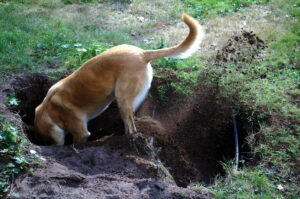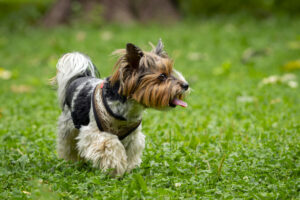We have all heard of herding dogs and how they make great pets. But do we know if they get along with our other pets?
Herding dogs are known to be good with other animals. This is because they are in charge of guarding livestock. Herding dogs also make sure none of the livestock strays away from the pack. With that being said, herding dogs can get along with other pets if they have been trained. They could even become great friends since the herding dog breeds are loyal and friendly.
Let’s take a look into what herding dogs are all about. As well as how they get along with other household pets.
What Are Herding Dogs?
A herding dog is a breed of dog that has the job of herding livestock like sheep, goats, and cattle. They are sometimes also known as shepherd dogs or working dogs. These breeds of dogs have been bred and taught to slightly modify their hunting prey behavior. And channel it into herding behavior.
Some herding dog breeds will nip at the ankles of the animals; they are herding, while others will get in front of the animals and pretty much stare them down. Another technique used by some herding dogs is to be a virtual fence. This means using their massive bodies to guide the sheep in the direction that they need to go.
Finally, some dogs will bark aggressively at the livestock as part of their herding techniques. If you are considering adopting a type of herding dog breed, it is always best to do some in-depth research. Research will give you a thorough understanding of their breed characteristics.
One good book that gives an in-depth perspective on the development and needs of the breed is Holland’s “Herding Dogs: Progressive Training.”
Some breeds of herding dogs will work well with any animal, even chickens! Other types of herding dogs have been bred over time to develop a specific personality or physical characteristics that suit them to herding a very particular type of animal.
What Are The Different Breeds Of Herding Dog?
There are well over fifty different kinds of herding dog breeds. Some of the more commonly known breeds are Border Collies, Welsh Corgis, Australian Shepherds, Shetland Sheepdogs, German Shepherd, Bernese Mountain Dog, and the St. Bernard. Herding dog breeds are common all over the world and range widely in size and temperament.
What Are Herding Dogs Like As Family Pets?
Herding Dog breeds are more often than not selected as family pets. These dogs have many traits that make them attractive as a prospective member of the family. They are loyal, loving, smart, and energetic.
However, these dogs need special consideration to keep them engaged and entertained. Herding dogs do their best when they have a job to do. These are very bright, athletic dogs that won’t be happy with a short walk around the block. Or lying on the couch watching TV with you.
They need vigorous exercise, both physically and mentally. Some herding dogs will also nip at the heels of family members. They have also been known to use their body size to try and guide them. They do this in an effort to herd the family, especially kids!
These dogs need to be thoroughly trained not to use these behaviors. To own a herding dog and help them to be successful as a family pet, you need to be consistent in training and give them “work” that rewards their instincts.
What Are The Concerns Around Herding Dogs And Other Pets?
Herding dogs are bred and used to herd other animals. And sometimes a herding dog in a family home will begin herding the children in the home. These dogs instinctually want to react to and guide anything that is moving or making noise.
This will apply to other pets in the home as well, cats, rabbits, other dogs, and really anything moving around. Honestly, the herding instinct is rechanneling the natural predatorial instinct that all dogs have. If the other pet in the home is considerably smaller than the herding dog, these reactions and instincts could be dangerous for them.
It’s important to recognize this, plan for it, and overcome it to equip the herding dog for success as a family pet.
What are the ways that herding dogs can be trained that would help improve safety around other pets?
The first step to having any dog breed succeed as a family pet is to teach them basic obedience skills. If you have taught your herding dog to listen to you when you say “leave it,” that is an excellent start to teaching them to leave the cat alone and not try to herd it into your bedroom.
Other basic commands like “sit,” “stay,” and “come” will also come in handy when teaching your dog appropriate behavior in the home. If the dog is trying to lean on the bunny and guide them down the hall, you can command them to sit and stay.
You can also teach your dog some good manners in the face of their natural instincts by having them sit and wait for your invitation before eating their meal.
An essential component of any well-behaved herding dog’s lifestyle is activity. Your herding dog must be well exercised, both physically and mentally. If the dog is well occupied, it won’t be wandering around your home looking for outlets for their herding dog energy that might not be well received by the other pets.
To keep your dog mentally active, it’s possible to plan brain games or puzzle activities for them, or even just a hide and seek game. A tired dog is a happy dog!
Physical Activities
Some examples of suitable physical activities for a herding dog would be long runs, hikes, and playdates outdoors with other well behaved dogs. It’s even possible to take your herding dog on a long run, have them a fair distance away from you, and still give them training cues without straining your voice! This is possible with a remote training collar.
You can take the dog to a beautiful big field, let them run to the other end, and then quickly call them back. Again, this reinforces the importance of basic obedience training as a dog owner.
Another key to success with a herding dog in a household with other pets would be to adopt them as a puppy. If the puppy is introduced to the other pets as a youngster and trained to see them as fellow household members instead of prey, they are much more likely to live harmoniously with them.
Cats And Herding Dogs
It can be very challenging for cats to live calmly with herding dogs because cats desire a lot of personal space, whereas herding dog breeds tend to want to be physically close to everyone in the house. This is why an introduction when the dog is young can help them learn the “rules” of life with a cat.
What Would Be A Good “Job” For A Herding dog?
Another option for a positive activity for your herding dog could be Dog Sports! Dog sports make excellent “jobs” for herding dogs and include such things as agility courses, flyball, and Disc Dog.
On an agility course, dogs get to navigate an obstacle course of tunnels, weave poles and jumps alongside their handler. Agility is also a great way for your herding dog to spend time with you, which makes them happy.
In flyball, the dogs get to chase tennis balls and jump over hurdles. Definitely, a good way for a herding dog to get their chasing instinct worn out a little!
And at Disc Dog, these dogs get to chase and catch a flying disc, which is another way to please their chasing instinct and make it less likely that they will chase the chinchilla at home.
What Are Other Ways That You Can Improve Safety At Home For Your Other Pets?
Socialization of your herding dog will go a long way to making them more well behaved with a variety of other living creatures, as well as social settings. If your dog walks well on a leash, is comfortable in a variety of environments, and is polite when meeting humans and other animals, they are going to have good manners with pets at home too.
If your dog travels well, you are more likely to take them out of the house with you. This leads to them having more mental and physical stimulation and then meets their needs in that regard.
Finally, crate training your herding dog will help ensure the safety of other household pets when you are not around. Crate training also has many other helpful benefits. Such as giving the dog a safe space for resting, facilitating potty training, and making any travel a breeze.
Make sure that your crate is large enough for the dog to stand up in. Your dog should also be able to comfortably turn around and stretch out and lie down in.
You should make sure that your dog has emptied their bladder before placing it in a crate for a period of time. Also, make sure they have had their daily exercise. Dogs will do their very best not to soil their crate space, which helps with potty training.
It’s important to always leave a good chew toy or two in the crate with the dog. Remove their collar or harness before placing them in the crate. To make the crate time positive, consider giving them a treat every time they go in it.
The crate is your dog’s den. So make sure that the other animals in the household don’t enter it, or sleep in it. The crate is the dog’s safe space, and other pets should not have access to it.
Conclusion
I hope that these tips have equipped you to feel more comfortable introducing a herding dog to your family. Be it members, that are furry, scaly, or human!
Don’t forget to join the pack! By joining the pack, every time a new article is released by Dog House Times, you will be notified.





